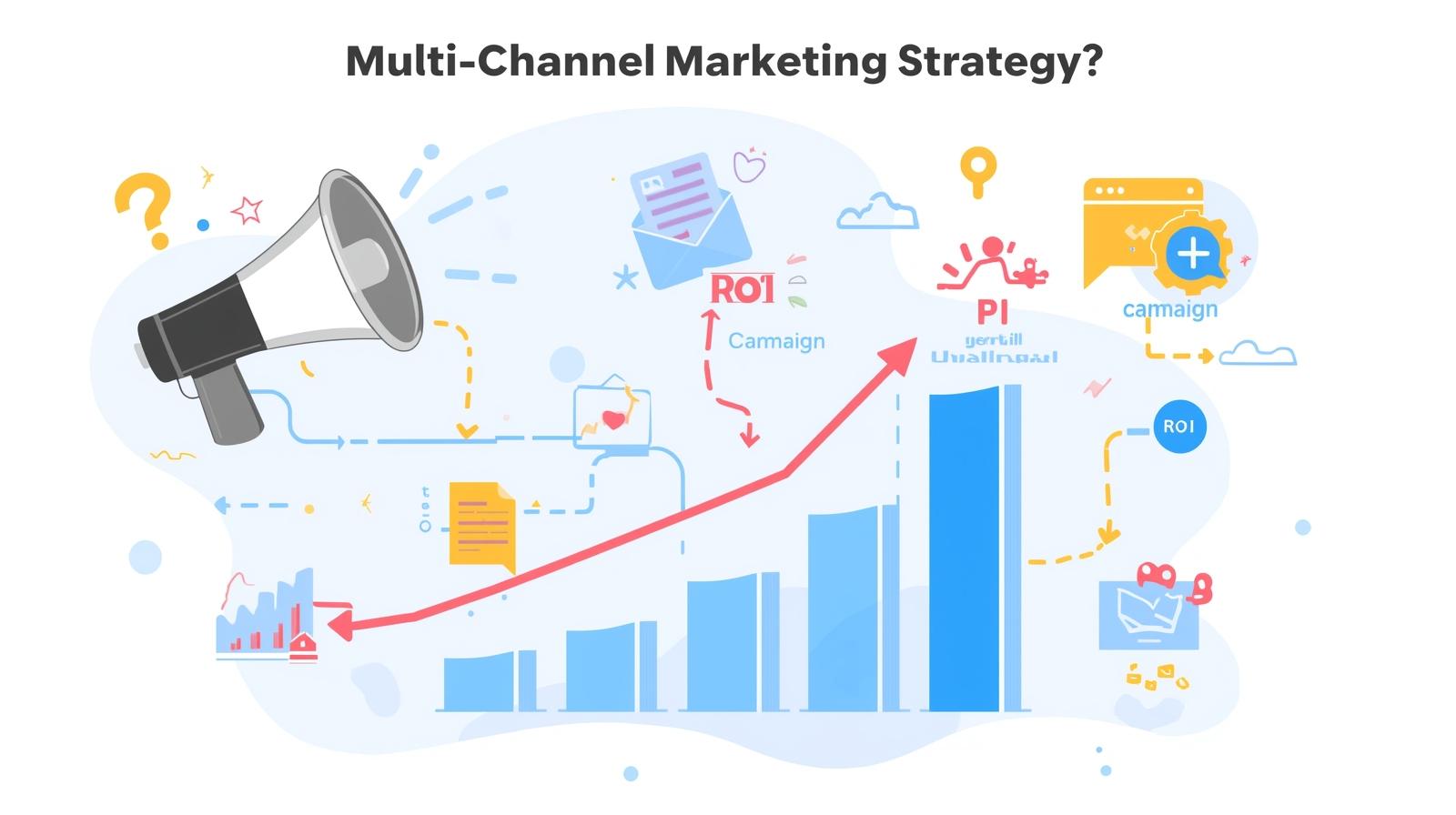Introduction
Running paid ads can be exciting—until you realize your campaigns aren’t delivering the results you expected. For many businesses, investing in digital advertising comes with high hopes of increasing traffic, generating leads, and boosting sales.
Yet, all too often, even well-funded campaigns fail to produce meaningful results. If you’ve ever asked yourself, “Why are my paid ads not working?”, you’re not alone.
Understanding why underperform is critical for maximizing your digital advertising ROI. Without analyzing the reasons behind low engagement, poor click-through rates, or lackluster conversions, businesses risk wasting both time and budget on campaigns that fail to meet objectives.
PPC campaign issues can arise from multiple factors, from targeting mistakes to creative missteps, and addressing them effectively is key to turning a struggling campaign into a profitable one.
In this article, we’ll explore the most common reasons your paid ads aren’t working and share actionable strategies to improve results.
By the end, you’ll have a clear roadmap to optimize your campaigns, enhance ROI, and ensure every advertising dollar contributes to your business growth.
Why Paid Ads Aren’t Working: Common Causes
Even the most carefully planned paid ad campaigns can underperform if key elements are overlooked. Understanding the common pitfalls helps marketers identify why their ads aren’t working and take corrective action.
1. Weak or Unclear Offers That Cause Paid Ads Not to Work
One of the most frequent reasons for poor paid advertising performance is a weak or unclear offer. If your value proposition isn’t compelling or fails to communicate the benefit clearly, audiences are unlikely to click or convert. Ads must answer the question, “What’s in it for me?” immediately.
Whether promoting a product, service, or lead magnet, ensure your offer is precise, time-sensitive, and emphasizes the unique value your business provides.
Fix failing ads by refining your offer and presenting it in a way that resonates with your target audience. Reviewing common PPC campaign mistakes can help identify pitfalls and improve performance.

2. Poor Audience Targeting
Even a strong offer can fail if it reaches the wrong people. Poor audience targeting is a common PPC campaign issue that results in wasted impressions, low engagement, and missed ROI opportunities.
Conduct thorough audience research, segment your market effectively, and leverage platform targeting options to reach those most likely to convert.
By aligning ads with the right demographics, interests, and behaviors, you improve ad relevance and boost campaign performance.
3. Ineffective Ad Messaging and Creative That Fails Paid Ads
Generic visuals or uninspired copy can drastically reduce the effectiveness of your campaigns. Paid ad mistakes often stem from messaging that doesn’t resonate or creative assets that fail to capture attention.
To increase ad conversions, focus on crafting clear, compelling headlines, persuasive calls-to-action (CTAs), and eye-catching visuals. Testing different creatives regularly ensures you understand what works best for your audience.
4. Landing Page Mismatch
A disconnect between ad content and the landing page is another major reason campaigns fail. Even if users click on your ad, they may abandon the page if the messaging or offer doesn’t align.
Improve paid ad results by ensuring landing pages reflect the ad’s promise, are visually consistent, and feature a clear conversion path. Optimized landing pages significantly enhance user experience and maximize conversion rates.
5. Neglecting Analytics and Testing
Failing to track performance or conduct A/B tests leads to wasted budget and missed opportunities. PPC troubleshooting is essential to identify what’s working and what isn’t.
Use analytics tools to monitor clicks, conversions, and other KPIs, then adjust your campaigns accordingly. Continuous testing of headlines, visuals, and targeting parameters allows you to optimize campaigns for better paid advertising performance over time.
6. Budget Misallocation
Finally, overinvesting in underperforming ads or channels can drain resources and reduce ROI. Paid ad mistakes often occur when budgets are set without considering actual campaign performance.
Allocate spend based on data, shift funds toward high-performing campaigns, and continuously evaluate ROI to ensure every dollar contributes to meaningful results.

How to Improve Paid Ad Performance
Boosting paid advertising performance requires a strategic approach that addresses the core reasons campaigns fail. By refining your strategy across offers, targeting, creative, and analytics, you can turn underperforming ads into high-converting campaigns.
1. Refine Your Offers
The foundation of any successful campaign is a compelling offer. To improve paid ad results, ensure your value proposition is clear, specific, and time-sensitive.
Highlight unique benefits, solve a concrete problem for your audience, and create urgency with limited-time promotions. A strong offer not only attracts clicks but also drives higher conversion rates, enhancing overall paid advertising performance.
2. Optimize Audience Targeting
Targeting the right audience is essential for maximizing ROI. Use detailed customer personas, segment your audience based on demographics and behavior, and leverage platform-specific targeting tools to reach potential buyers effectively.
Proper audience alignment addresses PPC troubleshooting concerns, reduces wasted ad spend, and ensures your campaigns reach the people most likely to convert.
3. Craft Engaging Messaging and Creative
Effective messaging and creative are key to capturing attention and encouraging action. Avoid paid ad mistakes by using strong calls-to-action (CTAs), high-quality visuals, and messaging that resonates with your audience’s needs and desires. Continuously test different ad copy and creative formats to increase ad conversions and maintain engagement.
4. Align Ads with Landing Pages to Improve Results
Consistency between ads and landing pages is critical. Ensure your landing page reflects the ad’s messaging, offers, and design elements.
A conversion-focused landing page improves paid ad results, reinforces trust, and guides users seamlessly through the conversion funnel, boosting digital advertising ROI.

5. Test and Analyze Continuously
Ongoing testing and analytics are crucial for campaign optimization. Implement A/B testing on headlines, visuals, and audience segments.
Monitor key performance indicators (KPIs) such as click-through rates, cost per acquisition, and conversions. Address PPC troubleshooting by adjusting campaigns based on real data to enhance paid advertising performance over time.
6. Allocate Budgets Wisely to Maximize Paid Ads ROI
Efficient budget allocation maximizes ROI and prevents wasted spend. Shift investment toward high-performing campaigns, pause or refine underperforming ads, and continuously assess performance metrics.
Avoid common paid ad mistakes by making data-driven decisions that optimize ad spend and deliver measurable results.
Best Practices to Prevent Paid Ads from Not Working
Achieving long-term success with paid ads requires more than fixing immediate issues—it demands a strategic, data-driven approach that continuously evolves.
By combining insights from analytics, creative testing, and audience research, businesses can ensure their campaigns remain effective and deliver consistent results.
1. Analyze Campaign Data Regularly
Regularly reviewing campaign data helps identify trends, top-performing ads, and areas that need improvement. Leveraging these insights allows marketers to optimize messaging, creatives, and targeting strategies, which directly improves paid ad results and resolves issues when paid ads are not working.
2. Integrate Paid Ads with Other Marketing Channels
Combining paid ad campaigns with other marketing efforts—like email marketing, organic social media, and content marketing—creates a cohesive multi-channel strategy. This approach reinforces messaging, nurtures leads, and maximizes overall digital advertising ROI.

3. Stay Adaptive and Test Continuously
Paid advertising is dynamic, with platforms frequently updating algorithms and targeting options. By continuously testing new strategies, monitoring KPIs, and iterating based on performance metrics, businesses can address common PPC campaign issues and maintain a competitive edge in the digital marketplace.
Conclusion
Paid ads can underperform for a variety of reasons—from unclear offers and ineffective messaging to poor targeting and lack of analytics. Recognizing these challenges is the first step toward turning struggling campaigns into high-performing assets.
The key to success lies in data-driven adjustments. By continuously analyzing performance metrics, testing creative elements, refining audience targeting, and optimizing budget allocation, businesses can significantly improve paid ad results and maximize digital advertising ROI.
If your campaigns are struggling or you’re unsure where to start, consider auditing your current ads or consulting a paid ad expert.
With the right insights and strategy, even campaigns that once underperformed can become powerful drivers of growth, engagement, and measurable ROI.


